A whirlwind trip on the legendary Ghan is an immersive experience, with colour, culture and connection.
Create a free account to read this article
$0/
(min cost $0)
or signup to continue reading
IT could pass as a glitzy ballroom at any swanky hotel. Dining tables draped in white, polished silverware, champagne flutes. But you won't see glittering designer gowns or sky-high stilettos here. The dance floor is not glossy hardwood, but dusty, red dirt. And the lights that shimmer high above are the real deal. I'm talking about the Milky Way, Southern Cross and Centaurus.
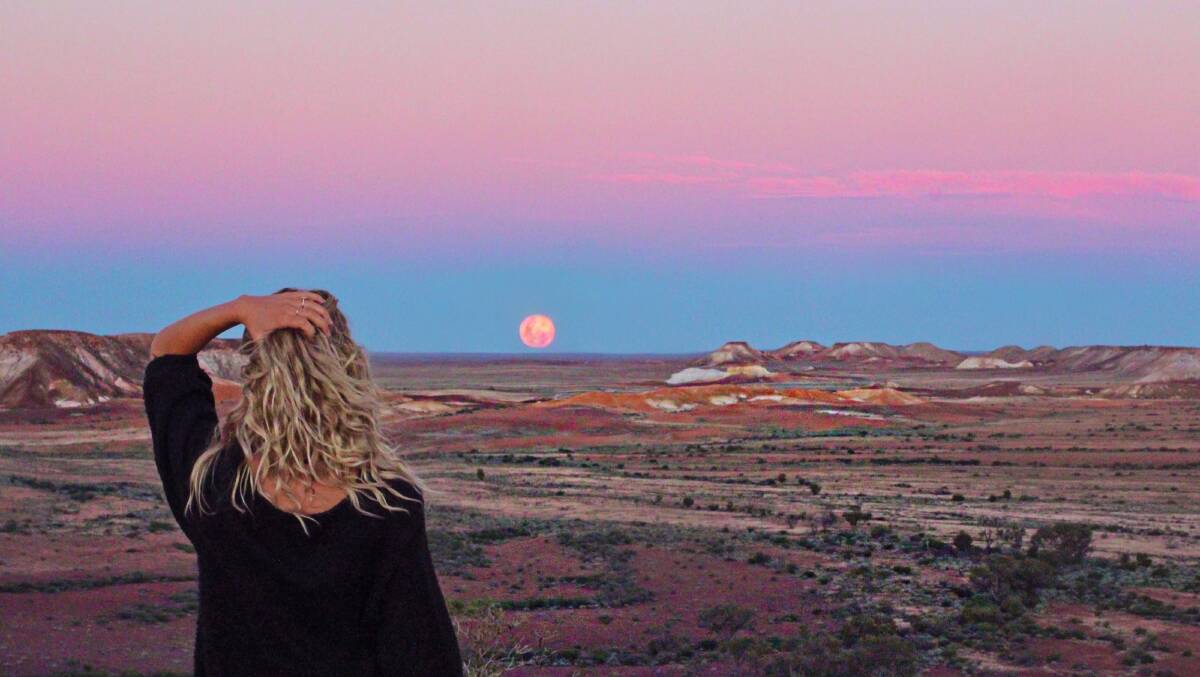
We're midway through our 3000-kilometre Ghan Expedition from Darwin to Adelaide and tonight's dinner is under the stars at Telegraph Station in Alice Springs. It's an all-guest, off-train experience and the mood is festive. Bonfires burn on the property's perimeter, providing warmth as the sun sets in the heart of Australia, while camel rides offer a fun way to pass the time as chargrilled beef fillet is expertly prepared.
A young blacksmith shows off a rare craft making souvenir bottle openers in coals that glow as red as the earth, while an acoustic duo plays the classics as hungry travellers share a meal and exchange stories of their day's adventures.
That's the thing about the Ghan. It unites people through shared experiences. Sometimes it's by design - forever friends fulfilling a lifelong dream or family members marking a milestone birthday, anniversary or retirement.
But often it's not. Often it's bringing together people with little more in common than their desire to travel on what's regarded as one of the world's greatest train journeys to experience outback Australia.
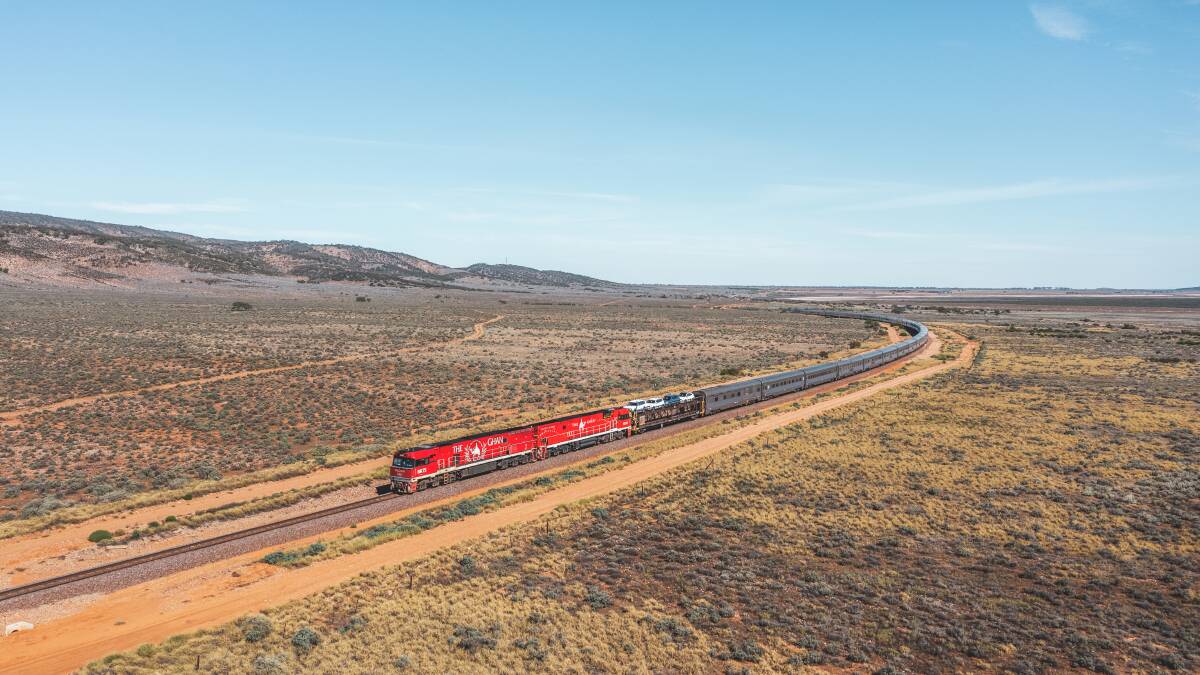
This sense of connectedness is the very essence of the Ghan.
The rail line was commissioned in 1911 to connect Adelaide and Darwin - a vision that took more than 90 years to achieve - and in its early years, the Ghan played an important role in getting supplies to remote areas of inland Australia.
During World War II, the Ghan was used to transport servicemen for training and deployment, with up to 247 trains running each week in 1944 - the busiest time in the train's history. Even its name gives a nod to the Afghan cameleers who, in the 1850s, helped connect central Australia to European settlers, ferrying goods and supplies with their "ships of the desert".
LIFE ON THE TRAIN
As a first-time rail traveller, I have few expectations when I board the train on a balmy Saturday morning at Darwin's Berrimah Terminal, about 20 kilometres from the city centre. I have, of course, read about the Ghan and seen iconic images of the gleaming red locomotive with its white cameleer logo, but to ascend the steps of carriage "L" for the first time makes my skin tingle.
Crew member Lily, decked out in her custom-made R.M. Williams uniform and akubra, welcomes me on board with a smile and some muscle, helping lift my oversized suitcase onto the train - an arduous task in the heat, but one she was clearly well accustomed to.
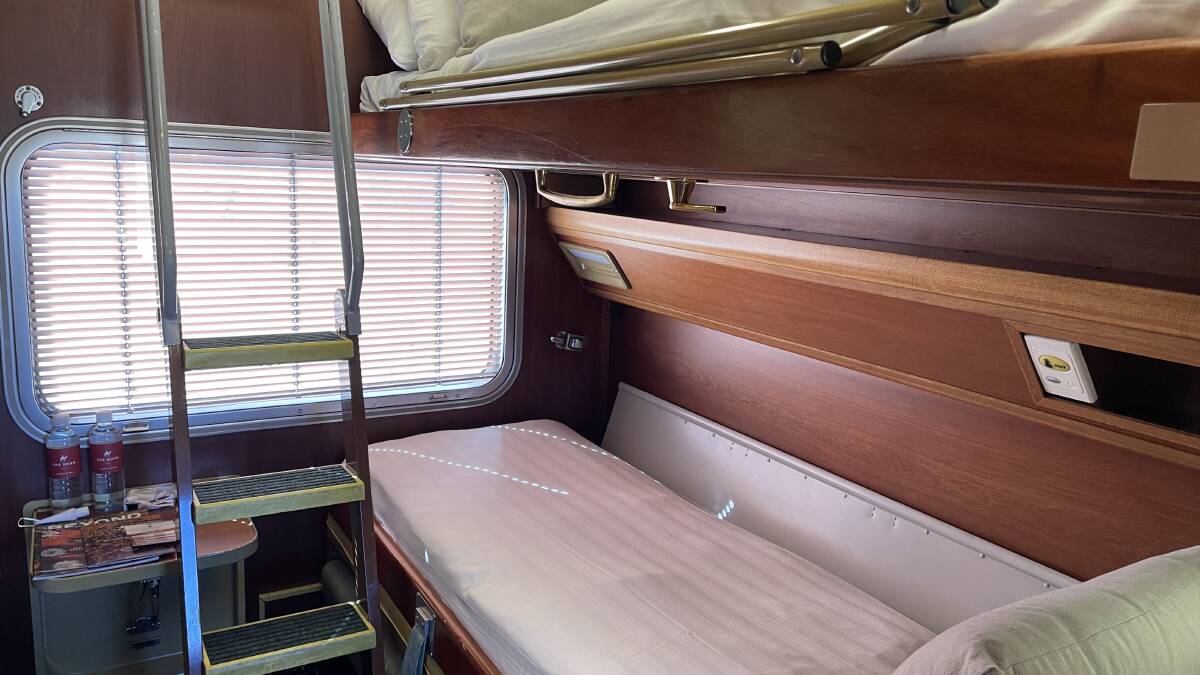
Once inside, Lily gives me a run through of my gold twin cabin - a small, but comfortable space featuring a three-seater lounge that folds out into a single bed at night (or bunk-style beds if travelling with another person), and a private ensuite with toilet, vanity and shower.
If bunks don't appeal, there are platinum suites that feature traditional double or twin beds, a larger ensuite and windows on both sides of the cabin offering uncompromised views. But you'll pay almost double for the privilege which also includes exclusive use of the Platinum Club (a combined lounge and dining carriage with timber floors, quartzite tabletops and leather banquette lounge seating), champagne, in-cabin service and private transfers where applicable.
Once settled into my cabin, I am given two all-important lanyards that detail my meal times in the Queen Adelaide Restaurant - a traditionally-styled dining cart featuring four-person booths and a mouth-watering menu that follows our journey along the tracks - and my off-train experiences.
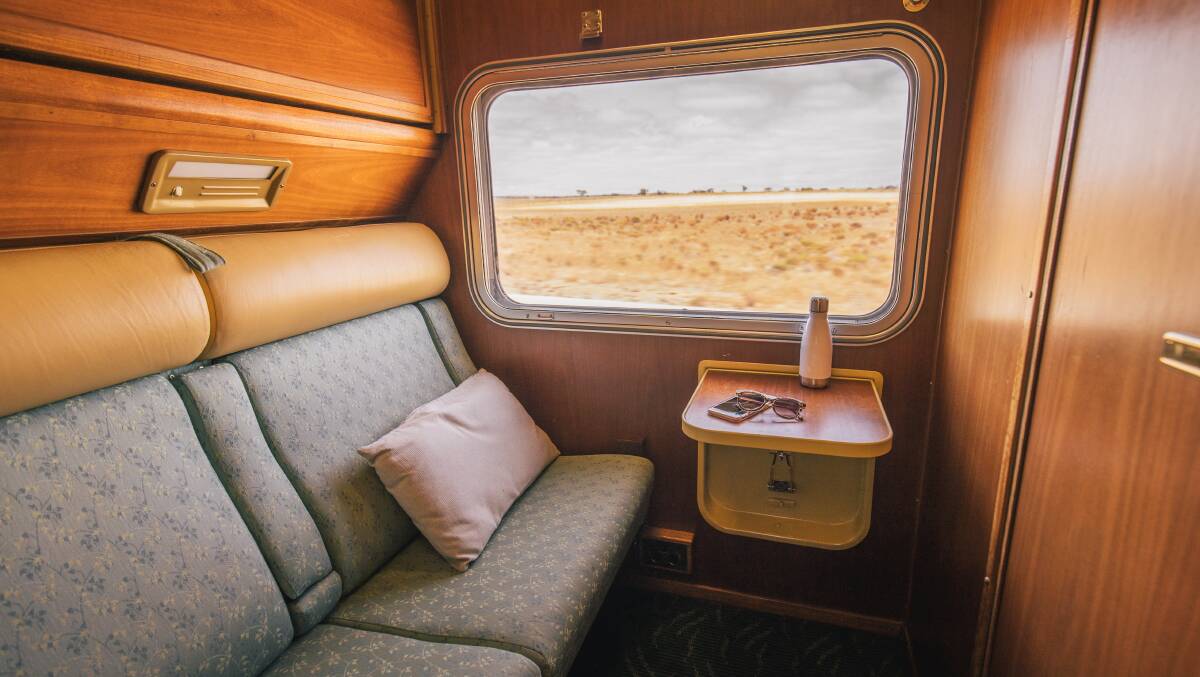
That's another thing about the Ghan. It is so well organised and skilfully executed by a crew of 40 or more people, who are committed to providing guests with exceptional service and lasting memories.
In fact, once you make the decision to book your trip, there's little more to think about other than whether to have crocodile dumplings or grilled barramundi for dinner.
The Outback Explorer Lounge is the social hub of the Ghan's gold carriages and it's where, on my first morning, I find solo traveller Susan who has booked the trip to celebrate her 69th birthday. Ordering a latte, I sit and chat with Susan, who confesses she didn't much sleep, much like myself.
For Susan, it wasn't the rattling of the train on the tracks or the stopping and starting for a passing freight train or the intermittent pinging of her phone as we moved in and out of internet reception that eluded her sleep, but pure excitement.
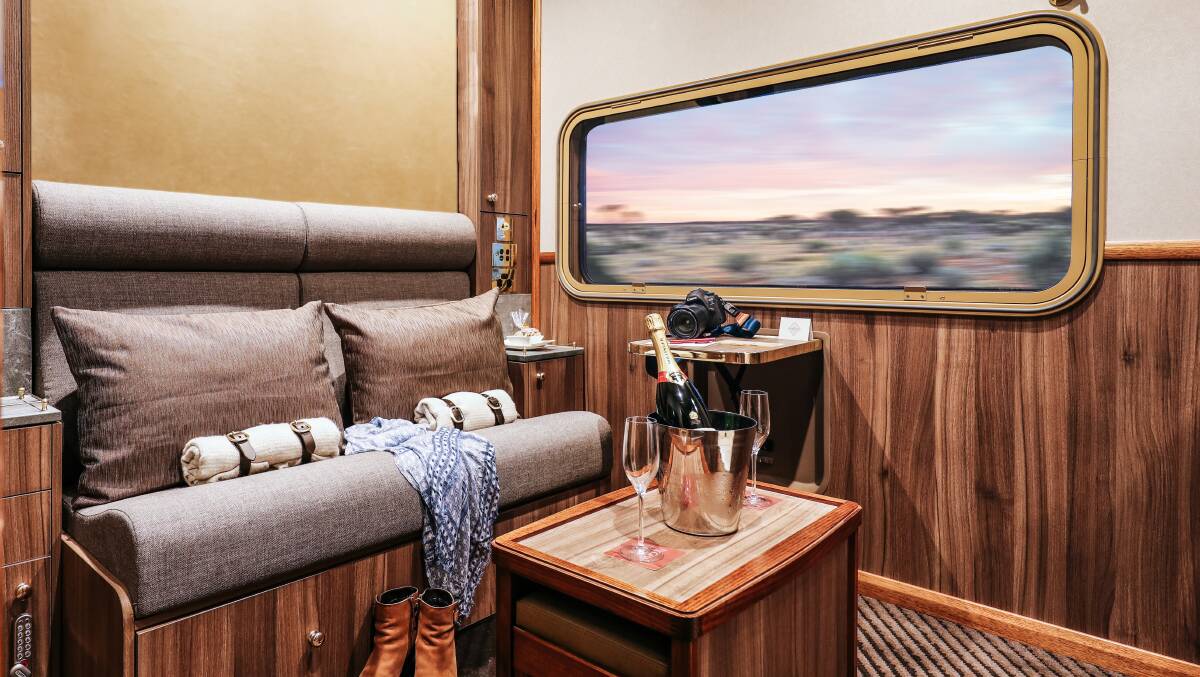
"If I'm honest, I didn't want to sleep. I didn't want to miss anything," she says. "I watched the sunrise this morning, it was so beautiful. I just laid in my bed snapping photos out the window. I'm sure my toes are in a lot of them."
Fellow Ghanian Chris is still on a high from the previous night when the crew surprised one of her travel companions with a birthday cake to celebrate his 80 years. "They brought him a beautiful little chocolate sponge cake with chocolate ganache. It was very impressive," she says. "The crew dimmed the lights and the entire dining room started singing 'Happy birthday'. It was lovely."
OFF THE TRACKS
While the train itself has plenty going for it, it's what happens off the tracks that makes this journey truly memorable. Like the 15-minute astrology lesson after dinner at Telegraph Station that's as informative as it is entertaining; and the surprise sunset drinks and canapes beside the train at Manguri; and an unexpected opal find while noodling underground at Coober Pedy.
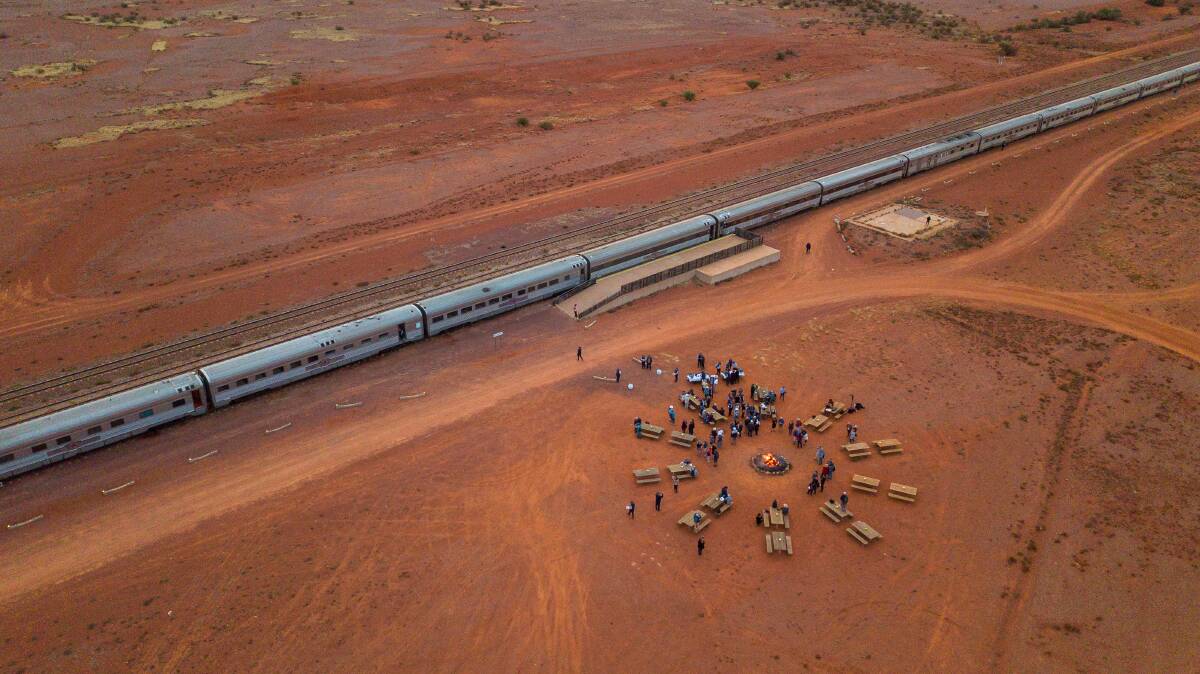
The Ghan has recently launched four new off-train experiences - the Standley Chasm Cultural Walk at Alice Springs, the Top Didj Cultural Experience at Katherine, Cutta Cutta Caves at Katherine, and the Painted Hills and Lake Eyre scenic flight at Coober Pedy. It has also brought back the popular Katherine Outback Experience, which offers guests the opportunity to visit a working cattle station, after a two-year hiatus.
"We're always looking for ways to improve our journeys and guest experiences, which is why we've invested in our off-train experiences, crafting new ways to connect guests with the country as part of the journey," Journey Beyond executive general manager of rail David Donald explains.
I am lucky enough to do the new Standley Chasm Cultural Walk during my journey. Standley Chasm is a three-metre-wide, 80-metre-high gorge among the West MacDonnell Ranges, about 40 minutes' drive from Alice Springs.
Traditionally known as Angkerle Atwatye, meaning "gap of water", the chasm is owned and operated by the Western Arrernte people (pronounced Ah-runda) and is a site of cultural and spiritual significance.
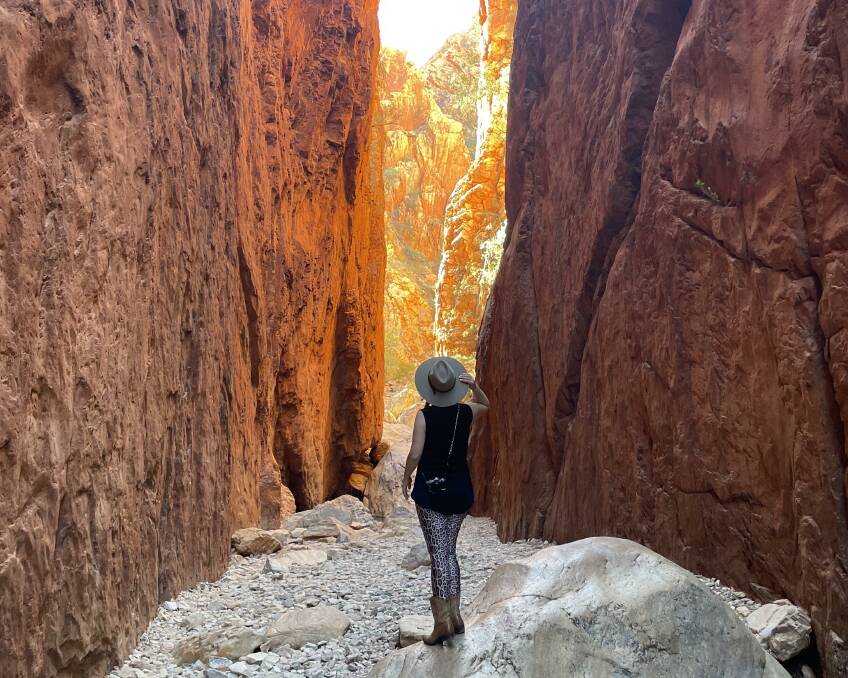
At the beginning of the walking track, an information board encourages you to "journey into another world, walk quietly and listen". Follow this advice and you'll be rewarded with stunning vistas of dramatic geological formations that date back millions of years and glow golden in the afternoon sunlight.
Take a tour - led by a local Arrernte guide - and you will hear Dreamtime stories as ancient as the jagged landscape and learn how to listen to a tree: close your eyes, hold your ear against the trunk and focus on the sounds. Trust me, you'll be amazed. The experience also includes a dot-painting workshop where you'll learn the traditional techniques of Western Arrernte artwork and take home your own hand-painted souvenir.
Rewind 24 hours and I'm at Nitmiluk Gorge, marvelling at Aboriginal rock art dating back 40,000 years as the sun beats down on me. This time I'm learning from the Jawoyn people (pronounced Ja-woyn) as I cruise down the Katherine River and take in the spectacular sandstone cliffs that tower 70 metres above me and change colour with the light.
Part of the Nitmiluk National Park, about 30 kilometres north-east of Katherine, the area is made up of 13 impressive gorges although today's tour showcases just two. Our local guide James passionately shares his knowledge as we wind through the waters that rise up to 10 metres higher in the wet season - black markings in the escarpments evidence of past waterfalls.
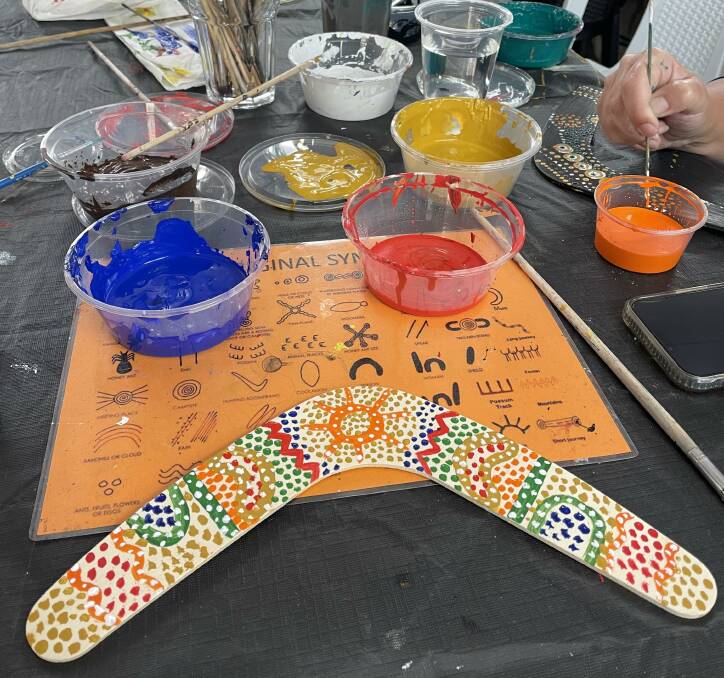
It's a fascinating tour that involves a short walk from the first gorge to the second, where another boat awaits, and stories of Dreaming figures such as Bolung, also known as the rainbow serpent. According to the Jawoyn people, Bolung rests in the deep water at the second gorge and must not be disturbed. Doing so may result in lightning storms and monsoonal floods. For this reason, the Jawoyn people do not fish or swim in the pools where Bolung sits, despite both activities being open to tourists.
My last off-train experience is at the opal capital of the world, Coober Pedy, about 850 kilometres north of Adelaide.
It's a quirky town where half of the 2000-strong population live underground to escape the unforgiving heat of summer and winter's cool desert nights, and home to the world's only golf club with reciprocal rights to the famous St Andrews in Scotland.
Our first stop is at the Breakaways, a vast plain of flat topped mesas once covered by the ocean, about 30 kilometres from the township. Staring out at the lunar landscape, it is easy to see why it's a popular sci-fi film location - Mad Max Beyond Thunderdome, Pitch Black and Red Planet were all filmed there, while US reality TV show Stars on Mars is currently in production.
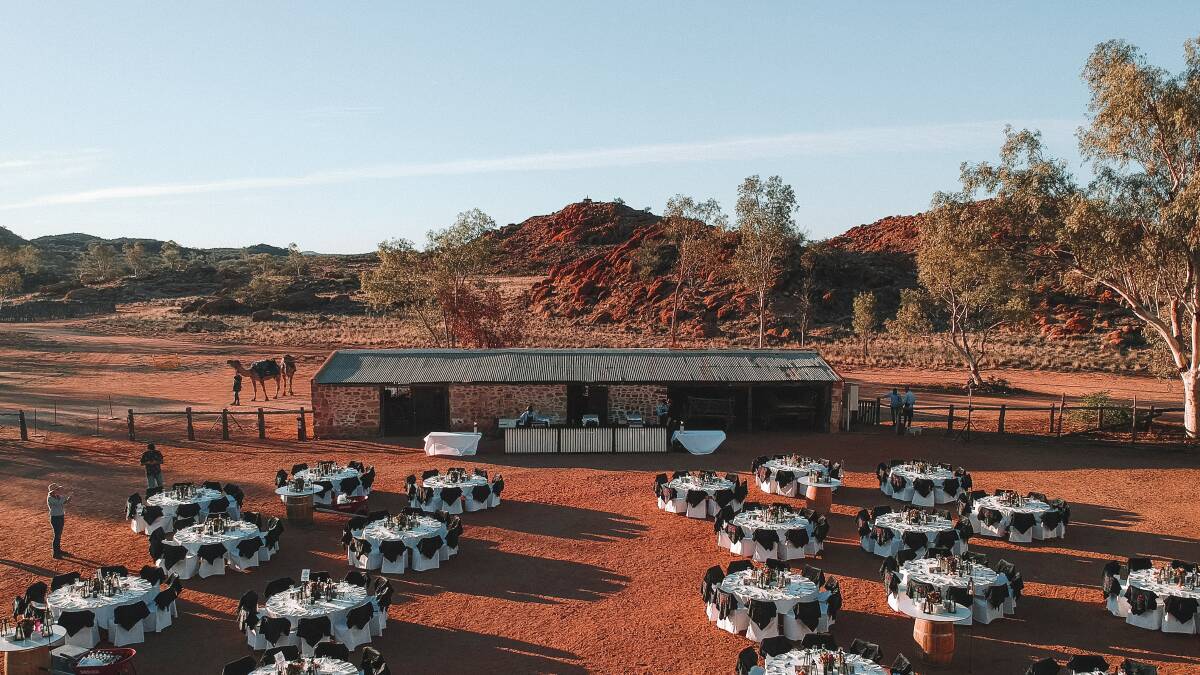
Next up is a visit to the subterranean Serbian Orthodox Church, built in 1993. Featuring a church, community hall, parish house and religious school, the complex is carved entirely out of sandstone between three and 17 metres underground.
Lunch is unsurprisingly underground again at the Quest Opal Mine, but not before we don a hard hat, grab a pick and try our luck at finding our own precious gemstone. If you don't like the idea of chipping away at a rock wall, you can always do some "noodling", also known as fossicking, in the leftover piles of earth. This is how I find my small slither of opal - a thin trace of green-blue colour in rock no bigger than my little finger nail.
After lunch, we visit the Umoona Opal Mine and Museum, where we're shown an example of a "dugout" or underground home - not recommended if you're claustrophobic - before we farewell the pockmarked opal fields and return to the comfort of the Ghan for our final night.
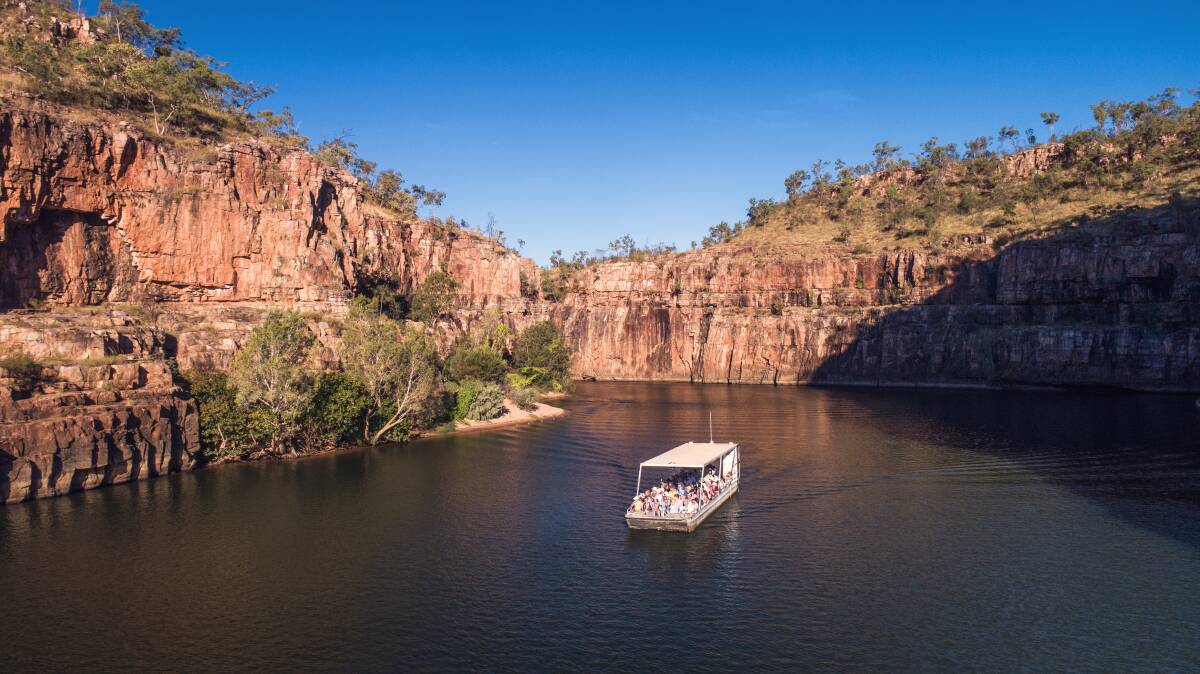
Rolling into Adelaide the next morning, it's hard to believe the journey is coming to an end but equally astonishing to think about how much we've seen and done in such a short period of time. In just 72 hours, I've been immersed in the beauty and culture of this magnificent country on land, water and even underground.
It's a sentiment shared by fellow travellers, many of whom now greet each other with a smile and by their first names. That's another thing about the Ghan. You may board the train as strangers, but leave as friends.
Read more on Explore:
SNAPSHOT
The three-night Ghan Expedition departs Darwin Wednesdays and Saturdays from April to October. Prices start from $3705 per person, with a 10 per cent discount available for bookings made at least six months in advance. A two-night itinerary departs Adelaide on Sundays from March to November, starting at $2480 per person. For more information and to see all holiday packages, visit journeybeyondrail.com.au
The writer was a guest of Journey Beyond.





